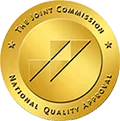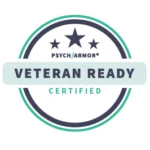Many people use the terms “trauma” and “PTSD” as if they mean the same thing, but they are not. At Arkview Behavioral Health in Pennsylvania, our team helps people and families understand what each term actually means and how they are different. Knowing the distinction can help guide the right support and treatment. If these challenges persist, a PTSD treatment program can offer structured assistance.
What is Trauma vs PTSD?
Trauma is an emotional, psychological, or physical response to a distressing or harmful event. Examples include accidents, natural disasters, violence, or any situation that overwhelms a person’s sense of safety. Trauma is the body and mind’s immediate reaction to something that feels threatening or deeply upsetting.
PTSD, or post-traumatic stress disorder, is a specific mental health condition that can develop after someone experiences trauma. PTSD involves a set of common signs of PTSD, such as flashbacks, nightmares, and ongoing anxiety, that last for at least one month and interfere with daily life. It is diagnosed by a mental health professional using the DSM-5 criteria.
The main difference between PTSD and trauma is that trauma is a response, while PTSD is a diagnosable disorder. Most people will experience trauma at some point, but only about one-third of those people go on to develop PTSD. Trauma responses often get better over time, while PTSD symptoms tend to persist and require professional intervention.
At Arkview BH, we support individuals experiencing both trauma responses and PTSD through evidence-based mental health care in Pennsylvania. For many people, finding the best way to treat trauma can accelerate healing and long-term recovery.
Comparing Symptoms of Trauma and PTSD
The symptoms of trauma and PTSD can look similar at first, but there are important differences. This table shows how a traumatic response may differ from symptoms of PTSD:
A traumatic response often includes shock, denial, confusion, or numbness. These feelings are usually temporary and fade as time passes. PTSD is marked by ongoing negative emotions, feeling detached from others, and losing interest in activities.
Physical signs of trauma include exhaustion, trouble sleeping, and appetite changes. These are usually short-term. With PTSD, sleep problems (including night terrors) and fatigue continue for a long time, and physical tension or hypervigilance can occur.
Trauma may cause intrusive thoughts, brief memory problems, and difficulty concentrating. In PTSD, there are persistent intrusive memories, flashbacks, and distorted beliefs about oneself or others. These cognitive symptoms last longer and can disrupt daily life.
These differences help clarify the “traumatic response definition” and highlight how “ptsd trauma” symptoms are identified.

Types of Trauma and Risk Factors for PTSD
Trauma can come from many different experiences, and not all trauma leads to post-traumatic stress disorder (PTSD). Understanding the different types of trauma and the factors that increase risk for PTSD helps clarify how “ptsd from trauma” can develop.
Acute trauma refers to the emotional, physical, or psychological response to a single distressing event. Examples include a car accident, a natural disaster like a tornado or flood, or an assault. These events are sudden and unexpected.
Chronic trauma happens when a person is exposed to distressing events repeatedly or over a long period. Examples are ongoing abuse, domestic violence, or long-term bullying at school. The effects of chronic trauma can build up over time.
Complex trauma results from exposure to multiple traumatic events, often starting in childhood. This can include repeated childhood abuse, neglect, or exposure to several different traumatic experiences over time. Complex trauma may be linked to a condition called complex PTSD.
Common traumatic events:
Physical or sexual assault, serious accidents, combat exposure, and natural disasters are all examples of situations that can cause trauma and potentially lead to PTSD from a traumatic event.
PTSD development rates:
About one out of every three people who experience severe trauma will develop PTSD. Most people will have some kind of trauma response, but not everyone will develop the disorder.
Risk factors:
Previous trauma exposure increases the risk for PTSD. People with little or no social support after a traumatic event are more likely to develop PTSD. Having pre-existing mental health conditions, such as depression or anxiety, can also increase the chance that trauma will lead to PTSD.
When Does Trauma Become PTSD?
Trauma and post-traumatic stress disorder are related, but not the same. Most people experience some symptoms after a distressing event, such as feeling on edge, having trouble sleeping, or thinking about what happened. These are normal trauma responses.
If these symptoms last more than one month and cause problems with daily life, a diagnosis of PTSD, or post-traumatic stress disorder, may be made. This is known as the one-month diagnostic threshold. For some, symptoms appear right away, but for others, PTSD can develop months or even years after the event. This is called delayed-onset PTSD.
Four main symptom clusters are used to describe PTSD. Re-experiencing involves having flashbacks, nightmares, or intrusive memories of the trauma. Avoidance means staying away from reminders of the trauma, including people, places, or thoughts. Negative changes in mood and thinking can include feeling numb, losing interest in activities, or having ongoing negative beliefs. Changes in arousal and reactivity include being easily startled, feeling irritable, or having problems with sleep.
Unprocessed trauma that does not resolve over time can develop into PTSD. Not everyone who experiences trauma will develop post-traumatic stress disorder, but when trauma responses are persistent and interfere with life for over a month, PTSD may be present.
What’s the Difference Between PTSD and Anxiety?
PTSD and anxiety are not the same, though both involve feelings of worry or fear. For those who experience ongoing anxiety unrelated to trauma, an anxiety treatment center can provide effective strategies for long-term relief. The main difference between PTSD and anxiety is that PTSD anxiety is directly linked to a specific traumatic event, while generalized anxiety is not.
PTSD anxiety happens when reminders of a past trauma cause a person to feel anxious, often leading to flashbacks or the urge to avoid certain situations. This anxiety is usually tied to specific people, places, or things that recall the trauma.
General anxiety, also called generalized anxiety disorder, involves ongoing, excessive worry about many areas of life. This type of anxiety is not connected to any one event and does not usually involve flashbacks or avoidance of trauma reminders.
It is possible for a person to have both PTSD and an anxiety disorder at the same time. Both conditions can interfere with daily life, but the triggers and symptoms are different. The “difference between PTSD and anxiety” is important for making sure each condition receives the right type of care.
Can You Have PTSD Without a Traumatic Event?
The answer to “Can you have PTSD without a traumatic event?” is no, because trauma exposure is required for a PTSD diagnosis. Some people may experience symptoms that look like PTSD but are caused by other conditions, such as adjustment disorders or other anxiety disorders. In these cases, the symptoms may be similar, but the diagnosis is not PTSD.

Treatment Approaches for PTSD and Trauma
Treatment for PTSD and trauma uses methods that are supported by research and are designed to help people process and recover from their experiences. Different approaches are used depending on the severity of symptoms and the individual’s needs. “PTSD trauma” treatment approaches often include a mix of psychotherapy, medication, and varying levels of care.
Trauma-focused therapies are a primary treatment for PTSD and trauma. EMDR (Eye Movement Desensitization and Reprocessing) involves recalling distressing memories while following specific eye movements, which can help process traumatic experiences. CPT (Cognitive Processing Therapy) is a type of talk therapy that helps people change upsetting thoughts related to trauma. PE (Prolonged Exposure) therapy gradually exposes individuals to trauma memories or situations in a controlled way to reduce avoidance.
These therapies are structured, time-limited, and specifically target trauma memories and their impact on daily life. Enrolling in a trauma therapy program can help individuals work through unresolved distress.
Medications are sometimes used when symptoms of PTSD are severe or disrupt daily functioning. FDA-approved medications for PTSD include certain antidepressants called SSRIs (Selective Serotonin Reuptake Inhibitors). These medications can help with mood, anxiety, and sleep problems but do not replace psychotherapy. Medication is usually given alongside therapy, not as a stand-alone treatment.
Treatment intensity varies based on the individual’s symptoms and safety. Outpatient programs involve attending therapy sessions while living at home and are suited for those with mild to moderate symptoms. Inpatient programs provide 24-hour care and are recommended when symptoms are severe, daily life is disrupted, or safety is a concern.
Arkview BH offers both outpatient and inpatient treatment options to match each person’s needs and level of support required.
Moving Forward with Professional Support
Trauma responses and post-traumatic stress disorder (PTSD) are both treatable conditions. Mental health professionals use specific tools to assess whether a person is experiencing a normal trauma response or has developed PTSD, looking at factors such as symptom duration, severity, and impact on daily life.
Arkview BH offers care for both trauma and PTSD using evidence-based treatment methods, with personalized plans tailored to each person’s symptoms, history, and recovery goals. Options include different types of therapy, medication when appropriate, and varying levels of support from outpatient sessions to inpatient care.
Benefits of trauma include increased self-awareness, development of healthy coping skills, improved relationships, reduction of trauma-related symptoms such as anxiety and flashbacks, enhanced resilience to handle future challenges, and a safe space for healing and closure. With consistent support and evidence-based treatment, many individuals are able to recover and achieve long-term mental wellness.
FAQs About Trauma vs PTSD
Trauma is not an emotion; it is a response that can include emotions such as fear, anger, or sadness.
A traumatic response is the immediate psychological and physical reactions that happen after a person is exposed to a distressing or life-threatening event.
Trauma symptoms usually last a few weeks to a month, but PTSD symptoms last longer than one month.
Yes, delayed-onset PTSD can develop, with symptoms beginning months or even years after the traumatic event.






















